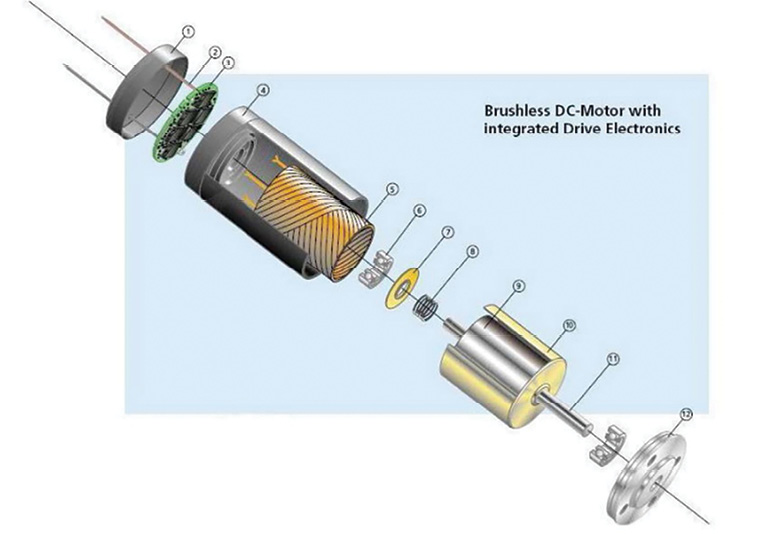
Synchronous electrical motor powered by an inverter The motor from a 3. 5 in floppy disk drive. The coils, arranged radially, are made from copper wire covered with blue insulation. The rotor (upper right) has been eliminated and turned upside-down. The grey ring inside its cup is an irreversible magnet.
DC brushless ducted fan. The two coils on the printed circuit board connect with 6 round long-term magnets in the fan assembly. A brushless DC electrical motor (BLDC motor or BL motor), likewise called a digitally commutated motor (ECM or EC motor) or synchronous DC motor, is a synchronous motor utilizing a direct existing (DC) electrical power supply.
The controller adjusts the phase and amplitude of the DC present pulses to manage the speed and torque of the motor. This control system is an alternative to the mechanical commutator (brushes) used in many conventional electrical motors. The building and construction of a brushless motor system is usually similar to a irreversible magnet concurrent motor (PMSM), however can also be a changed unwillingness motor, or an induction (asynchronous) motor.

The advantages of a brushless motor over brushed motors are high power-to-weight ratio, high speed, nearly immediate control of speed (rpm) and torque, high performance, and low maintenance. Brushless motors find applications in such places as computer peripherals (hard disk, printers), hand-held power tools, and lorries varying from design aircraft to automobiles.



Background [edit] Brushed DC motors were created in the 19th century and are still typical. Brushless DC motors were enabled by the development of solid state electronics in the 1960s. An electric motor establishes torque by keeping the electromagnetic fields of the rotor (the rotating part of the maker) and the stator (the repaired part of the maker) misaligned.
DC going through the wire winding develops the magnetic field, providing the power which runs the motor. More In-Depth produces a torque that tries to realign the fields. As the rotor moves, and the fields enter alignment, it is needed to move either the rotor's or stator's field to preserve the misalignment and continue to create torque and motion.